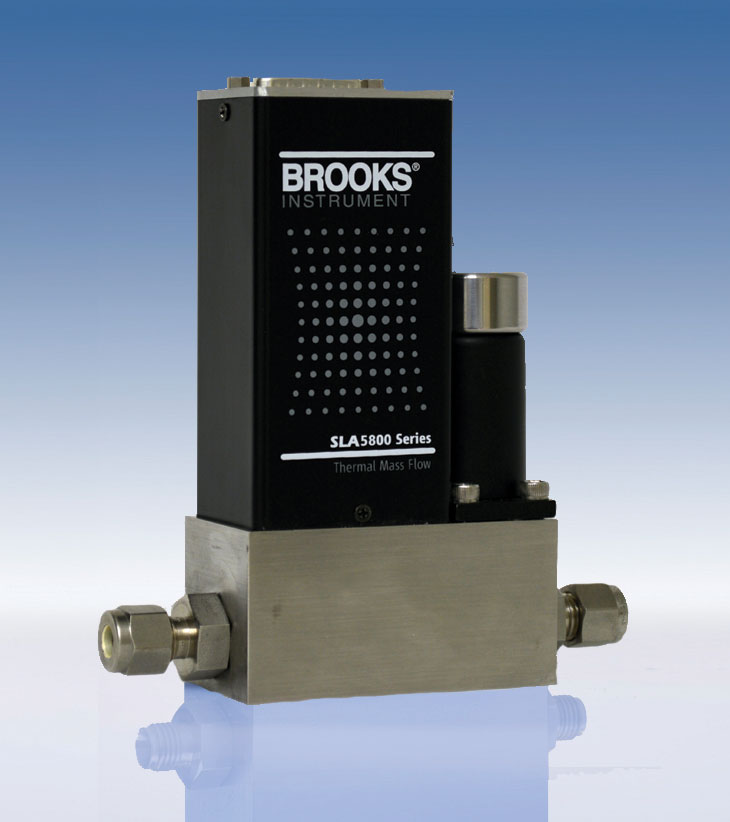
Thermal mass flow controllers and
thermal mass flow meters are used to measure and control the flows of gases. The measuring terminology usually includes words like "standard" or "normal" flow. A standard cubic foot of gas is the same as an actual cubic foot of gas only if the measurements are taken at some standard set of conditions (STP); like 70 degrees F and one atmosphere ambient pressure. If the ambient conditions change, you may never know how much gas you have in a volumetric measuring chamber, but, if you use a device that measures standard cubic feet of gas, you will always know the flow.
Thermal mass flow controllers and meters use a sensor that measures standard units. If you are measuring 30 psi nitrogen at 100 degrees F, the device will indicate the amount of standard cubic feet per minute (SCFM) flowing or it could indicate in standard liters per minute (SLPM). Either way, you can change the actual temperature and the actual pressure and the measuring device will still indicate flow in standard units.
A thermal mass flow controller is similar to a thermal mass flow meter. A meter measures flow and gives an output signal proportional to flow. A controller will also have a valve on board and can manipulate the flow by throttling a valve. It is common to send a command signal to the thermal mass flow controller asking for a constant flow of, say, 30 SLPM and the controller will measure, control and output a process variable signal that should agree with the command signal.
Thermal mass flow controllers are handy to set up constant flows under varying conditions. Multiple thermal mass flow controllers can be used to control different gases going into a reactor. The command signals can be sent via 4-20 mA or any number of digital signals such as DeviceNet, ProfiBus, or Foundation Fieldbus. By commanding the thermal mass flow controllers from a central control system, you can program a recipe for an entire batch such as a reactor that has many stages. The gases injected into a reactor could be oxygen (to increase dissolved oxygen), CO2 (to increase acidity), nitrogen (to deplete oxygen), methane (to fuel a fire) or any number of other gases.
Thermal mass flow controllers can measure flows lower than 3 standard cubic centimeters per minute (SCCMs) to over 2500 standard Liters per minute (SLPM). They can be controlled using analog commands (4-20 mA or 0-5 VDC) or digital commands such as DeviceNet or Foundation FieldBus. The physical units can be used in labs, pilot plants, and research areas as standard units. They can be supplied as NEMA 4X devices for hose down or outside installation. And they can be supplied as Class One, Div Two devices for hazardous areas.
In general, thermal mass flow controllers are great for measuring and controlling the flows of clean gases in any situation.